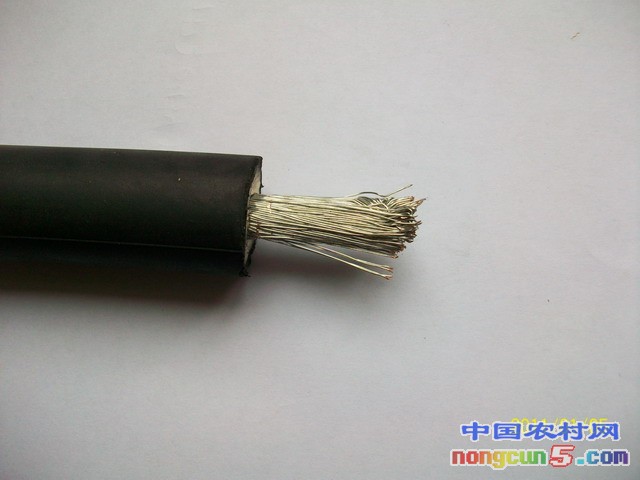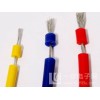
Surface discharge between gas and solid
帶電作業(yè)工具和空氣的交界面上出現(xiàn)放電現(xiàn)象稱為沿面放電。沿面放電發(fā)展成貫穿性的空氣擊穿稱為閃絡。沿面放電是一種氣體放電現(xiàn)象,由于介質(zhì)分界面上的電場強度分布不均勻,沿面閃絡電壓比氣體或固體單獨存在時的擊穿電壓都低。
The phenomenon of discharge at the interface between live working tools and air is called surface discharge. The development of a surface discharge into a penetrating air breakdown is called flashover. Surface discharge is a kind of gas discharge phenomenon. Due to the uneven distribution of electric field intensity on the dielectric interface, the flashover voltage along the surface is lower than that of the breakdown voltage when the gas or solid exists alone.
沿面放電和固體介質(zhì)表面的電場分布有很大關(guān)系。一般說來,固體介質(zhì)處于電極間電場中的形式,有以下三種典型情況:JYJ電機引接線氣體和固體之間的沿面放電

Surface discharge is closely related to the distribution of electric field on the surface of solid dielectric. Generally speaking, the solid medium is in the form of electric field between electrodes. There are three typical cases as follows:
固體介質(zhì)處于均勻電場中,它與氣體的分界面和電力線的方向平行,如下圖(a)所示。這種情況在工程上較少遇到,但實際絕緣結(jié)構(gòu)中,介質(zhì)處于稍不均勻電場中,它的放電現(xiàn)象與上述均勻電場中的情況有很多相似之處。
The solid medium is in a uniform electric field, which is parallel to the gas interface and the direction of the power line, as shown in figure (a) below. This situation is rarely encountered in engineering, but in the actual insulation structure, the dielectric is in a slightly uneven electric field, and its discharge phenomenon is similar to that in the above-mentioned uniform electric field.
固體介質(zhì)處于極不均勻電場中,且電場強度垂直于介質(zhì)表面的分量(以下 簡稱垂直分量)要比平行于表面的分量大得多,如下圖(b)所示。
The solid medium is in a very inhomogeneous electric field, and the component with the electric field intensity perpendicular to the surface of the medium (hereinafter referred to as the vertical component) is much larger than the component parallel to the surface, as shown in figure (b) below.
固體介質(zhì)處于極不均勻電場中,但在介質(zhì)表面大部分地方(除緊靠電極的很小區(qū)域外),電場強度平行于表面的分量要比垂直分量大

The solid medium is in a very inhomogeneous electric field, but in most parts of the surface of the medium (except for a small area close to the electrode), the component with the electric field intensity parallel to the surface is larger than the vertical component







